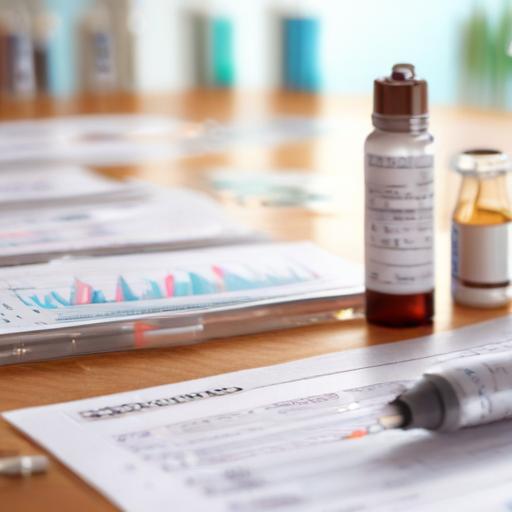Eli Lilly reports positive Phase 3 ATTAIN-2 results for orforglipron, an oral GLP-1 receptor agonist, in adults with obesity or overweight and type 2 diabetes
Lilly announced topline results from the Phase 3 ATTAIN-2 trial evaluating orforglipron, an investigational once-daily oral GLP-1 receptor agonist. The study enrolled adults with obesity or overweight and type 2 diabetes and assessed three dose levels (6 mg, 12 mg, and 36 mg) versus placebo over 72 weeks. All three doses met the primary endpoint and key secondary endpoints, demonstrating meaningful weight loss, reductions in A1C, and improvements in cardiometabolic risk factors. The highest dose (36 mg) achieved an average weight loss of 10.5% (22.9 pounds) versus 2.2% (5.1 pounds) with placebo. A1C reductions ranged from 1.3% to 1.8% across doses, with 75% of participants taking the highest dose achieving an A1C of 6.5% or lower.
Key efficacy findings
– Primary endpoint: Orforglipron 36 mg reduced body weight by 10.5% (22.9 pounds) at 72 weeks, compared with placebo (2.2% or 5.1 pounds).
– A1C outcomes: Across doses, A1C reductions ranged from 1.3% to 1.8% from baseline (8.1%), with a substantial proportion reaching A1C targets.
– Weight response: At the 36 mg dose, 50.1% achieved weight reductions of ≥10%, and 28.4% achieved reductions of ≥15%.
– Other metabolic benefits: Improvements were observed in non-HDL cholesterol, systolic blood pressure, and triglycerides. In a pre-specified exploratory analysis, the highest dose reduced high-sensitivity C-reactive protein (hsCRP) by 50.6%, indicating reduced inflammation.
– Treatment-regimen estimand: Across 6 mg, 12 mg, and 36 mg, dose-related improvements were seen in weight, A1C, and target attainment rates, with meaningful reductions versus placebo.
Safety and tolerability
– Adverse events: The most common events were gastrointestinal and generally mild-to-moderate. Nausea, vomiting, diarrhea, constipation, and dyspepsia were more frequent with orforglipron than placebo and increased with higher doses.
– Discontinuations: Rates due to adverse events were 6.1% (6 mg), 10.6% (12 mg), and 10.6% (36 mg) versus 4.6% with placebo.
– Overall discontinuations: 19.1% (6 mg), 22.3% (12 mg), 20.5% (36 mg) versus 20.0% with placebo.
– Hepatic safety: No signals observed.
– Safety profile: Overall, orforglipron’s safety was consistent with the GLP-1 receptor agonist class, aligning with expectations for an oral GLP-1 therapy.
Trial context and next steps
– Trial design: ATTAIN-2 (NCT05872620) is a 72-week, randomized, double-blind study comparing three oral doses (6 mg, 12 mg, 36 mg) with placebo in adults with BMI ≥27 kg/m² and type 2 diabetes, either on diet/exercise alone or on up to three oral antihyperglycemic medications.
– Global program: The ATTAIN program has enrolled more than 4,500 people across two global registration trials, supporting multiple dose strategies and real-world applicability.
– Regulatory path: With topline results in hand, Lilly indicated readiness to pursue global regulatory submissions for orforglipron this year, aiming to offer a convenient oral option that could complement or replace injectable GLP-1 therapies for some patients.
Executive perspective and context
– Industry impact: Orforglipron represents a potential shift in obesity and type 2 diabetes treatment by offering an effective oral GLP-1 option, which could improve adherence and broaden access for patients who prefer not to use injectable therapies.
– Expert remark: Independent clinicians have noted that the data align with efficacy and tolerability seen in injectable GLP-1 therapies, underscoring the potential to expand treatment options without compromising results.
What this means for patients and care teams
– If approved, orforglipron could provide a once-daily pill with flexible dosing (no food or water timing restrictions) to support meaningful weight loss and glycemic control.
– The oral format may reduce barriers to initiation and persistence, especially for patients hesitant about injections.
– While promising, regulatory decisions will depend on full data disclosure, longer-term safety, labeling considerations, and post-approval monitoring.
Summary
– The ATTAIN-2 topline results show that orforglipron, at all three tested doses, achieved significant weight loss and A1C reductions in adults with obesity or overweight and type 2 diabetes over 72 weeks, with a safety profile consistent with the GLP-1 class. The strongest dose delivered 10.5% weight loss and up to 1.8% A1C reduction, along with beneficial effects on cardiometabolic risk factors and inflammation. Lilly plans global regulatory submissions, signaling potential for a transformative oral option in obesity and diabetes care.
Additional comments and context
– Considerations for readers: Regulatory timelines are uncertain and depend on full trial data, manufacturing readiness, and safety review. If approved, pricing, payer coverage, and patient access programs will influence real-world impact.
– Market landscape: A successful oral GLP-1 could complement other obesity and diabetes therapies, potentially reshaping guidelines and standard of care if similar efficacy and tolerability are demonstrated in broader populations and longer-term studies.
– Practical angle: Healthcare providers may begin evaluating which patients might benefit most from an oral GLP-1 option, particularly those seeking non-injectable regimens or easier dosing schedules.
Overall sentiment: Positive, forward-looking progress in obesity and diabetes treatment with a potentially meaningful impact on patient experience and access.
